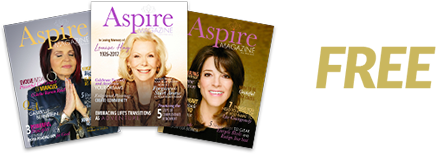
Emotional intelligence, or EQ, is a buzzword in personal-development trainings as well as some spiritual circles. But is it possible to have a healthy relationship with emotions when they are so demeaned in our society? Is it possible to find a different way to understand them? And even change how you deal with them?
The short answer is yes, although becoming emotionally intelligent is easier said than done. To stop those knee-jerk reactions takes commitment, self-awareness, and some inner work to determine what was triggered and why.
I define EQ as the ability to accurately perceive and the willingness to feel emotions until they are complete. Taking it further, it’s understanding their messages and choosing to respond responsibly rather than blaming, reacting and lashing out.
Emotions are Judged
Most children weren’t given instructions as to what to do with emotions; no tools to feel and understand them. Adults modelled suppressing or overreacting. They commanded you go to your room with that anger; don’t cry over spilt milk; I’ll give you something to cry about. Even the latest parenting technique, promoting use your words, is an effort to cut off emotions.
As a young child, you probably made negative decisions about emotions, especially during incidents containing pain or loss. Maybe your favorite cat got run over and your parents demanded that you stop being silly; it’s just a cat. From then on, your subconscious inner programming dictated that you suppress all that silly sadness.
What Happens
When you consistently suppress, deny or avoid emotions, they get stronger, more easily triggered and often unpredictably sporadic. This is a recipe for depression as well as chronic stress affecting every aspect of your life.
The derivation of the word emotion is motion. Envision them as circles wanting to be felt until the circle connects. By not feeling them all the way through, the circle never completes itself. You then repeatedly overreact in other situations in a futile attempt to feel what you didn’t feel previously. It doesn’t work.
Four Ways to Recognize and Move Emotions
Recognizing that so-called ‘negative’ emotions are covering up triggered fears empowers your EQ. However, your primitive, survival-based consciousness convinces you that it’s safer to hide and deny those fears by using other “safer” emotions such as anger. Here are some suggestions:
1.Defensiveness
Defensiveness indicates a fear was triggered. Triggers always expose something you are in denial of or hiding about yourself. I call that “mirroring.”
Scenario: Your spouse criticizes a home project you worked hard on, triggering defensiveness, anger and shame. You feel disappointed at their insensitivity, not understanding you or the project.
Leaving it there you’ll feel victimized, persecuted, attacked. However, using it to look within to discover the triggered, denied fear, the situation can be an awakening.
Ask inner questions to determine what’s being reflected. Does part of you believe you are incapable? Do you not feel deserving of support or validation for what you do? Was your real motive to gain your spouse’s (or parents’) approval rather than just doing a good job?
Taking responsibility for your emotional reaction and choosing to not lash our is an enormous step in emotional intelligence.
2.Avoiding conflict
If you’re a conflict avoider, you are sidestepping the emotions you assume will be triggered based on past confrontations. You fear being uncomfortable in this presumed scenario, rationalizing your choice to just not rock the boat.
On a deeper level, this choice is based on subconscious programmed beliefs that cover triggered fears.
With inner delving, you may discover that it’s not the confrontation you’re afraid of, but the emotions that come with it. Are you afraid of your own anger and what you might do with it? The real fears that surface might be surprising and enable you to trust anything that may come your way.
3. Feeling is healing
You may not realize that you are habitually bypassing your emotions. Do you automatically respond “Oh, I’m fine” even if you’re miserable? Do you rationalize, not wanting to burden others?
Allowing, accepting and feeling emotions releases them, letting them come full circle. Feeling sadness allows you to complete grief. Feeling anger helps you discover deeper fears and unbridles empowerment. Feeling shame can prevent you from making the same choices and can help you clean up your past.
Once you stop judging your own emotions, you will be able to accept others’ emotions. You can be present for them, choosing words that don’t suppress what they’re feeling. Communication becomes more open, honest, and empathetic. You address issues more constructively, developing authentic connections.
4. Rescuing
Seeking reassurance, pity or agreement when you’re upset is another way emotions are denied. Relying on others to ‘make you feel better’ thwarts what you need to feel.
There’s a big difference between receiving compassion and support versus needing someone to step in and save you — take away your pain; relieve your anxiety; tell you that you are right and the person who pushed your buttons is wrong. This is a mutual dance that couples and friends do frequently, one needs to be rescued and the other needs to rescue.
By having someone listen compassionately, acknowledging what you’re feeling and encouraging discovering the real issues – fears, false beliefs and mirrors — is empowering rather than saving. Taking responsibility for your triggers helps you not need that reassurance.
EQ people know that receiving reassurance from external places is disempowering and will not save them from their emotions. Nor do they want that.
What Next?
Mindfully feeling your emotional experiences without judgment is an act of self-love that extends to others. Taking time to understand the underlying fears, messages and mirrors will change those automatic reactions into chosen, responsible responses.
The world would be a more peaceful, loving place if we all functioned from the gift emotional intelligence brings. There would be fewer divorces, workplace conflicts would cease and no more need for war!
EQ has the power to transform your life and the world. We all deserve that.



